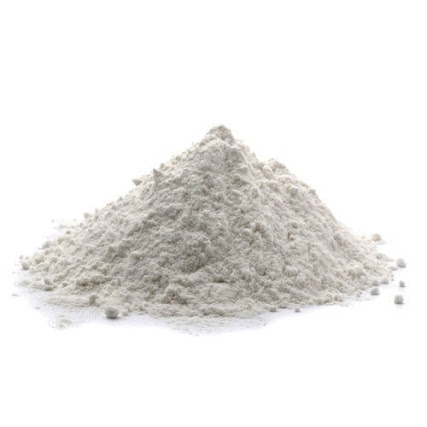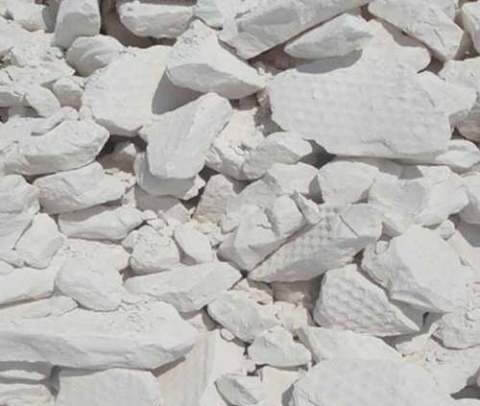Exploring Kaolin's Role in Ceramics and Pottery
Ceramics and pottery have been an integral part of human history, dating back thousands of years. One crucial component that has played a significant role in shaping these art forms is kaolin, a type of clay known for its versatility and unique properties. In this article, we will delve into the world of kaolin and explore its various applications in ceramics and pottery.
Kaolin, a versatile clay mineral, plays a vital role in ceramics and pottery. As a primary raw material, it enhances the final products' strength, plasticity, and whiteness.
Its fine particle size allows for smoother shaping and firing, resulting in exquisite finishes. For centuries, potters have relied on kaolin to create stunning porcelain and earthenware pieces.
its significance persists, with modern production techniques ensuring consistent quality. When seeking a reliable source, look no further than a leading kaolin producer company. They provide premium-grade kaolin, empowering artists and industries worldwide to craft exceptional ceramic and pottery artworks.
What is Kaolin?
Kaolin, also known as china clay, is a naturally occurring soft clay mineral composed of the mineral kaolinite. It is abundant in nature and is found in various regions around the globe. The clay's fine particle size, which gives it a smooth, silky texture, makes it a popular choice in ceramics.
Origins and Mining of Kaolin
Kaolin has a rich geological history, with deposits forming over millions of years. It is primarily extracted from large deposits found in countries such as China, Brazil, the United States, and the United Kingdom. The mining process involves both open-pit and underground methods, where the clay is carefully extracted and processed for further use.
Kaolin's Role in Ceramics
Enhancing Plasticity
Kaolin is renowned for its plasticity, the ability to be molded and shaped without cracking or deforming excessively. When added to clay bodies, kaolin improves their plasticity, making it easier for artists and potters to work with the material and create intricate designs.
Modifying Texture
The addition of kaolin in ceramics can significantly impact the texture of the final product. It contributes to a smoother finish, reducing the roughness of the surface and adding a delicate touch to the artwork.
Minimizing Shrinkage
During the firing process of ceramics, shrinkage can be an issue that affects the final dimensions of the piece. Kaolin acts as a flux, reducing shrinkage and helping maintain the intended size and shape of the artwork.
Improving Fired Color
Kaolin's unique composition influences the fired color of ceramics. When used in glazes and bodies, it can create a softer, more pastel-like hue, adding elegance and sophistication to the finished piece.
Promoting Fired Strength
Ceramics can be fragile, especially in their greenware state. However, kaolin aids in increasing the fired strength and durability of the material, ensuring the artwork withstands the test of time.
Kaolin in Pottery
Creating Porcelain
Porcelain, often referred to as "fine china," is a type of ceramic renowned for its delicacy and translucency. Kaolin is a primary component in porcelain clay, responsible for its pure white color and exquisite appearance.
Glazing Techniques
Kaolin is an essential ingredient in many glazes used in pottery. It acts as a stabilizer, preventing glazes from running off the ceramics during firing, and contributes to the final glaze's texture and color.
Kaolin's Influence on Ceramic Art
Kaolin's versatility and unique properties have a profound impact on ceramic art. From traditional pottery to contemporary sculptural pieces, artists worldwide incorporate kaolin to achieve their artistic visions and produce remarkable masterpieces.
Sustainability and Ethical Considerations
As kaolin mining and extraction continue to grow, it is crucial to address sustainability and ethical concerns. Sustainable practices, land reclamation, and responsible mining are vital to ensure the longevity of this valuable resource.
FAQs
Is kaolin safe to use in ceramics?
Absolutely! Kaolin is non-toxic and safe to use in ceramics, making it a popular choice among artists and potters worldwide.
Can kaolin be used as a standalone clay for pottery?
While kaolin is an excellent additive, it is generally not used as a standalone clay due to its low plasticity and high shrinkage.
How does kaolin contribute to the translucency of porcelain?
Kaolin's fine particle size and unique structure allow light to pass through the porcelain, giving it its signature translucency.
Are there any eco-friendly alternatives to kaolin in ceramics?
Yes, some artists explore the use of recycled materials and alternative clay minerals as more eco-friendly options in ceramics.
Can kaolin be used in hand-building and wheel-throwing techniques?
Yes, kaolin is versatile and can be used in both hand-building and wheel-throwing techniques, providing artists with a wide range of possibilities in creating their pottery.
Conclusion
Kaolin's role in ceramics and pottery cannot be overstated. Its exceptional characteristics contribute to the creation of beautiful, durable, and functional artworks. Whether in traditional pottery or cutting-edge ceramic art, kaolin continues to play a pivotal role in shaping the world of ceramics.




Comments
Post a Comment